sometimes, you’ll need to make the most of what you have, even small bedrooms. Decorating these spaces can be tricky. But, using reflective surfaces and light colors can create a more spacious feel. We’ve gathered simple, stylish tips to help you transform a small bedroom. Maximize your limited space by ensuring your decor enhances the room’s visual appeal. These easy hacks will turn your bedroom into a relaxing haven, making you feel connected to the space.
Use a Light Color Palette

A light color scheme visually expands your bedroom. This is ideal for a combined living and sleeping area.If you dislike light shades, neutrals are a great alternative. They create a calming and peaceful atmosphere for relaxation and sleep. Light colors also maximize natural light diffusion throughout the room. This is crucial for energy conservation and a more enduring home. Furthermore,light palettes promote a refreshing and productive atmosphere. As a versatile space, your bedroom shoudl accommodate activities beyond just sleeping and resting.
Hang the Curtains High
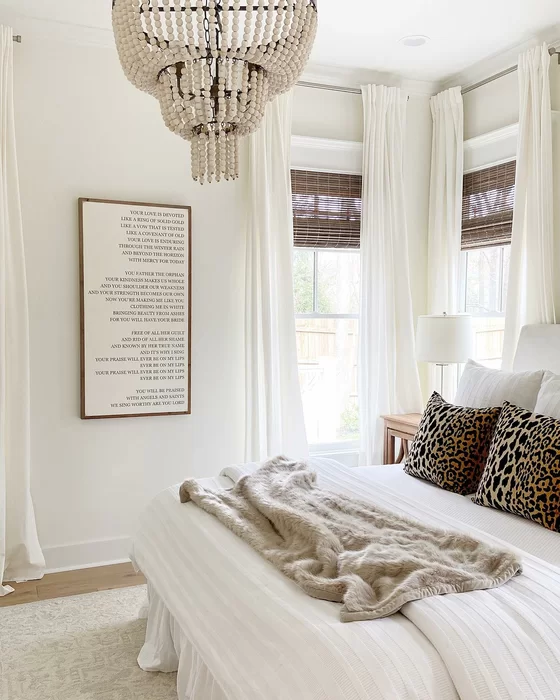
Beyond bedroom width, consider the room’s height. This emphasizes the space’s volume. Hanging curtains high draws attention to the wall’s vertical length. If your bedroom lacks high ceilings, this creates the illusion of more space. For low ceilings, striped curtains are a great choice. The goal is to visually lengthen the room.
Rearrange the Furniture Layout
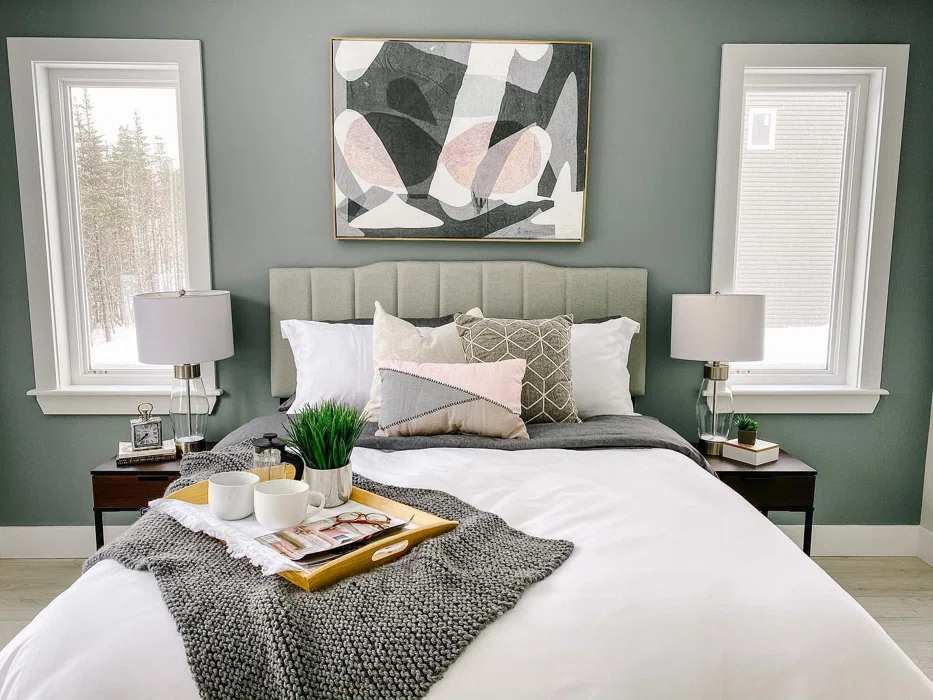
Sometimes, your bedroom can feel cramped and uninspired. Refreshing the furniture arrangement is a great solution. Start by completely emptying the room. This allows for a thorough cleaning and simplifies the rearrangement process. Prioritize easy movement within the space. Avoid placing furniture that obstructs pathways. Sketching the layout with precise furniture dimensions is highly recommended.This provides a realistic preview of the final bedroom design.
The most effective bedroom design prioritizes simplicity. Position your bed against the room’s main wall. this is typically the largest wall or the first one you notice upon entry. If space allows, center your bed on this wall. Ensure ample walking space on both sides. This prevents a cramped feeling and promotes easy movement.
Declutter the Bedroom Space
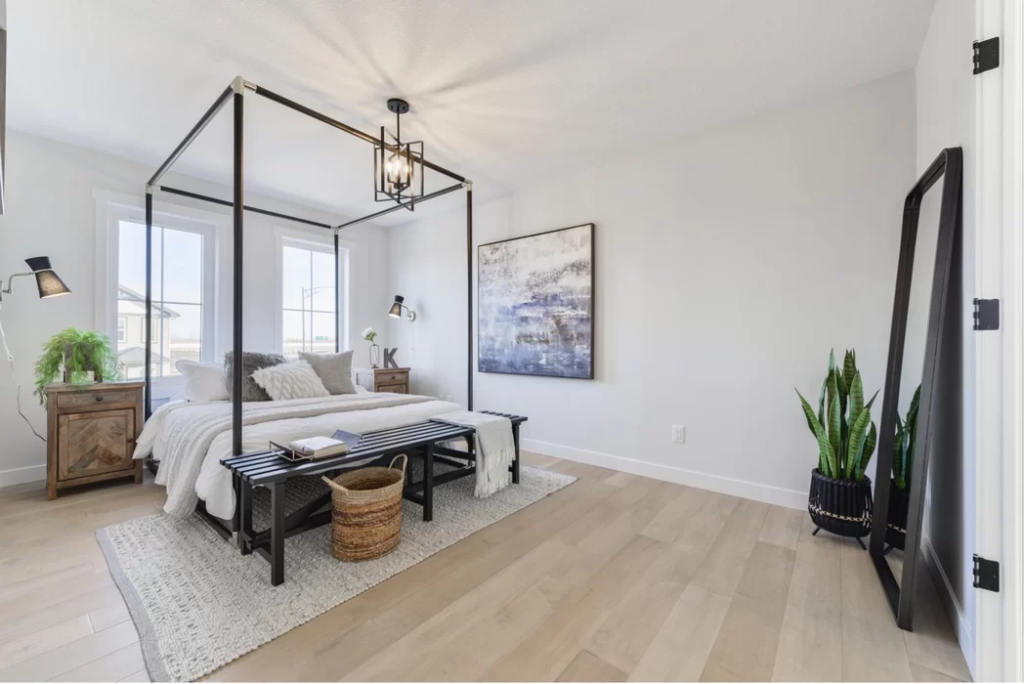
Start by decluttering your bedroom. Get rid of trash and store unneeded items. This reduces visual clutter from needless things. If you need items later, store them safely. Decluttering makes your bedroom feel lighter and bigger, transforming the entire space.
Make Room for Plenty of Storage
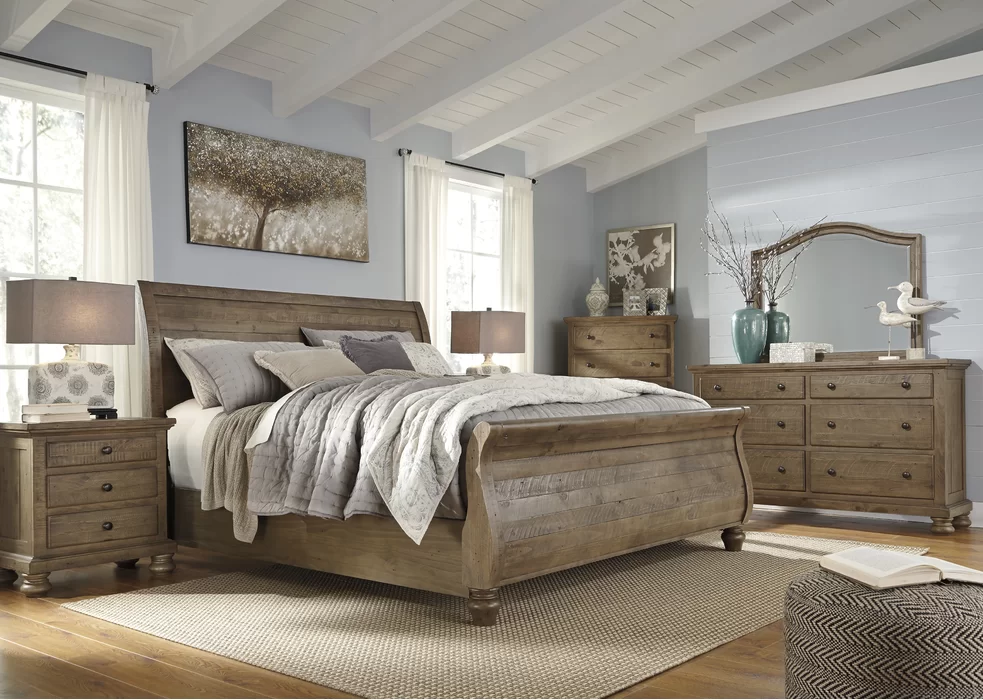
Maximize your small bedroom by prioritizing smart association. Utilize vertical storage solutions to save space. This prevents clutter and potential accidents. Invest in storage boxes and cabinets for infrequently used items. Effective storage makes the room appear larger and more functional. It also keeps the bedroom tidy and spacious, enhancing its overall appeal in 2025.
Create an Illusion with Mirrors
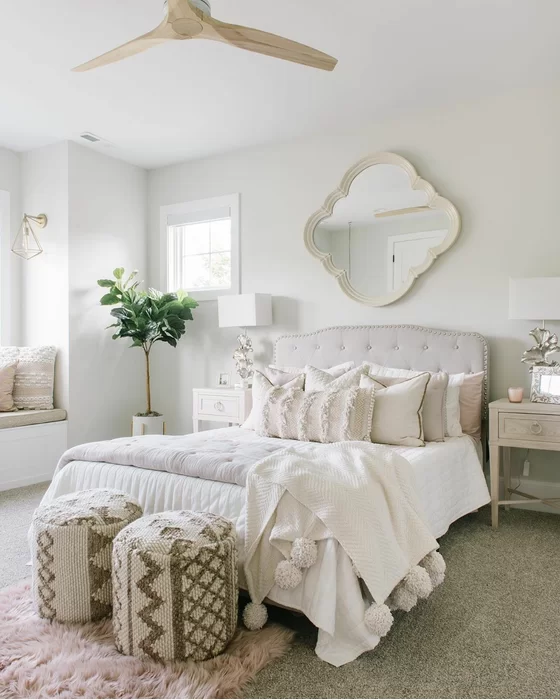
Want to make a room feel bigger? Many people wonder, “Can mirrors actually enlarge a space?” The answer is a resounding yes! Mirrors can create the illusion of more space and openness. Position mirrors to reflect a focal point,enhancing the sense of depth.They also amplify both natural and artificial light, brightening the room day and night. Placing a mirror near a window is especially effective, reflecting the outdoor view. A large mirror is notably useful for creating depth, tricking the eye into perceiving a larger area. This optical illusion happens as the mirror bounces light and color around the room.
Choose Light Built Furniture
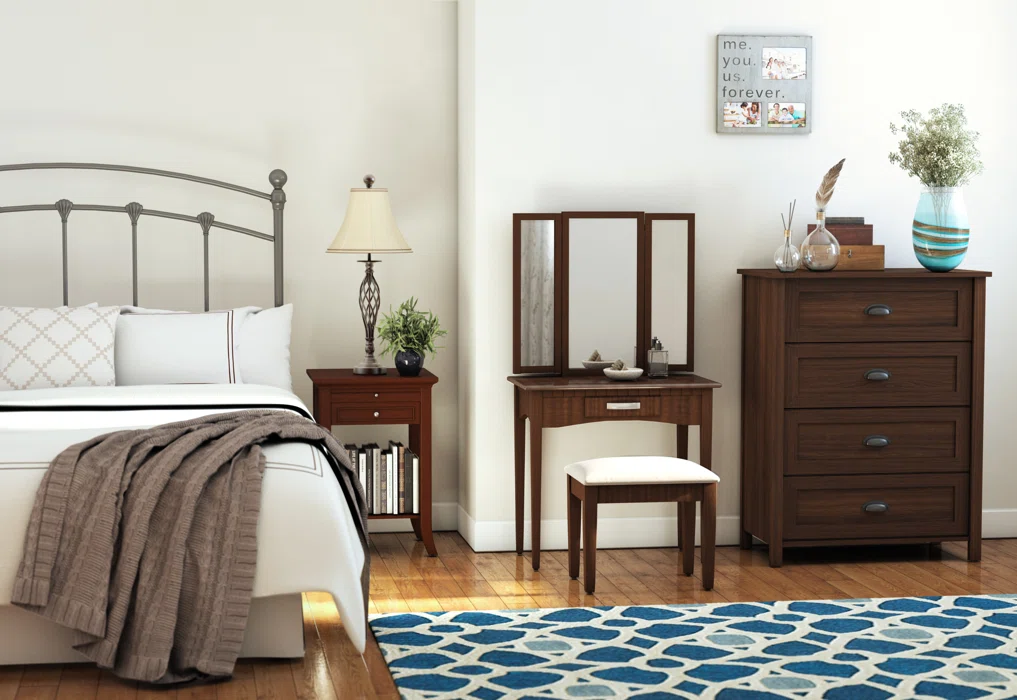
Forget bulky furniture if you want a small room to feel bigger. Large pieces can overwhelm the space.Instead, opt for furniture with sleek lines and a lighter feel.Think about industrial-style pieces with thin legs, or a delicate wrought iron bed frame. These designs create a sense of openness. A skeletal canopy bed, without heavy drapes, can also emphasize the room’s height.
Illuminate the Space
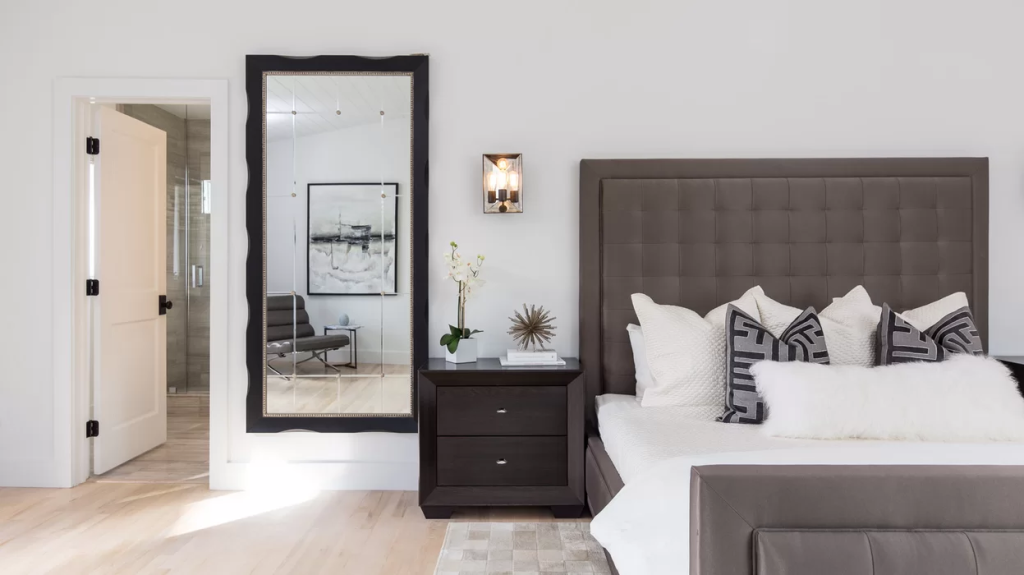
Your choice of light fixtures greatly influences a room’s perceived size. Avoid large, dark, or opaque fixtures as they visually shrink the space. opt for shining or clear materials instead. Recessed lighting is excellent for making a room feel larger. Install it on ceilings or walls for ample light in compact areas.Its flush,sleek design eliminates bulky fixtures,maximizing your space.
Elevate the Shelves
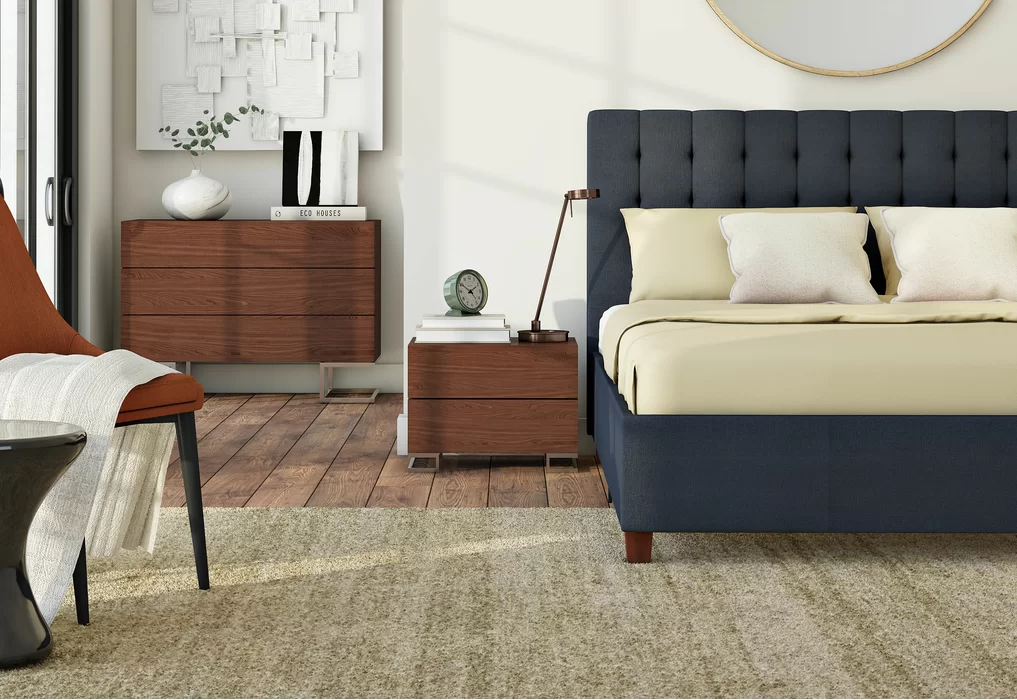
Chic boutique hotels frequently enough showcase brilliant small-bedroom design concepts. A popular trick they use is the floating shelf. Its hard to top the weightless effect of floating elements when aiming for an open, spacious feel.
Manage the Scale of Furniture

A compact room doesn’t limit your furniture choices.It simply means selecting pieces that fit the space and complement each other. A king bed with tiny nightstands looks awkward. Pick a bed size that allows for at least one or two nightstands of adequate size. In a small room, a tall, slim dresser often works better than a wide, short one. adjust furniture sizes to suit the room. Place larger items against walls to create open space and enhance the room’s size. Also, keep pathways clear. A room feels cramped when furniture blocks the view.
Introduce Pattern and Color
We often advise keeping small bedrooms simple. Use light colors and avoid over-designing. However, strategic use of patterns and colors can actually make a small room feel bigger. Wallpaper is an excellent tool for this. The right patterned wallpaper can visually push a wall back, creating the illusion of more space. Choose a wallpaper with a subtle, limited color palette. This adds depth without overwhelming the room.
Eliminate the Headboard
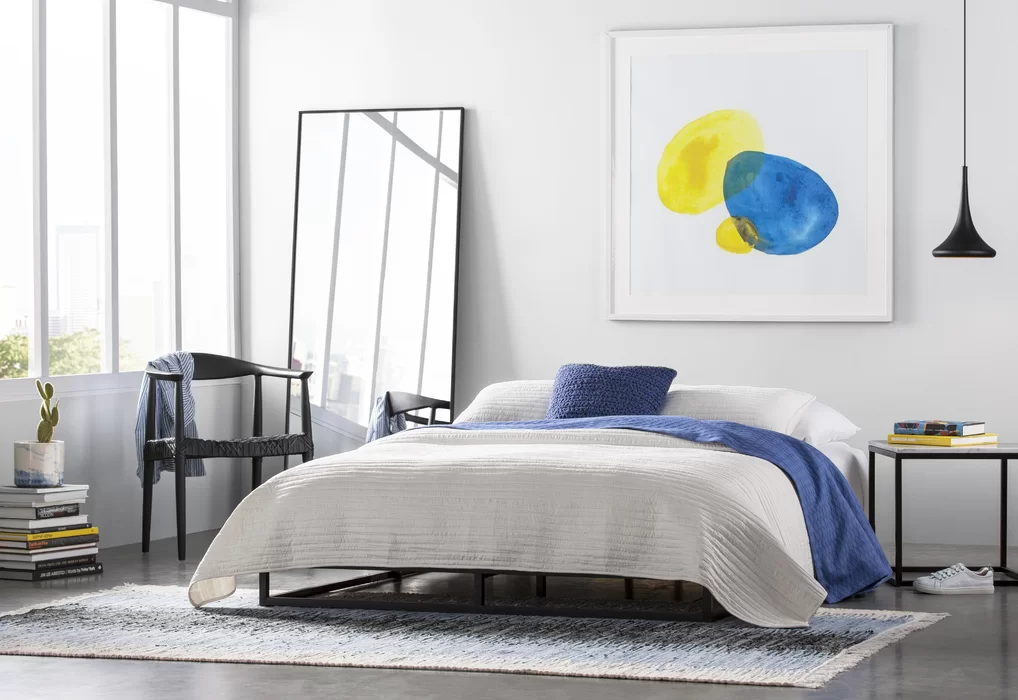
Designing a small bedroom requires balancing storage with minimal clutter.A quick solution is mounting artwork on the wall,either as a headboard or throughout the space.This artwork, similar to an industrial bedside table, enhances the feeling of openness. Painting it the same color as the walls helps it blend seamlessly while providing storage.
Layer an Area Rug
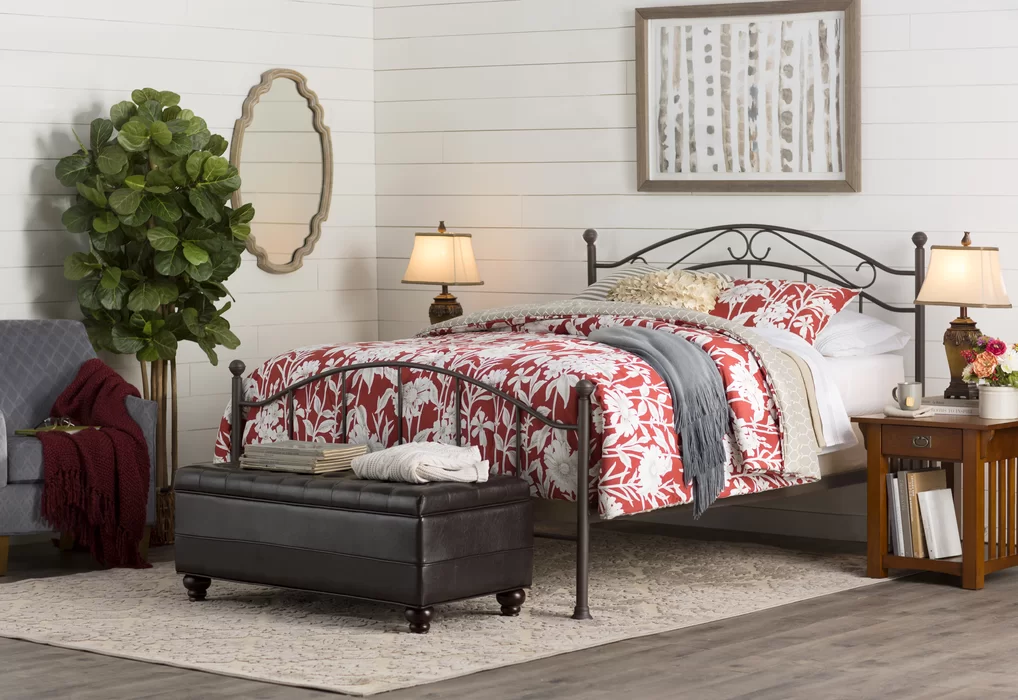
A large rug is an easy trick to visually expand a compact room. Its expansive nature pulls the gaze outward, creating a perception of greater size. Renters can use it to cleverly conceal worn or damaged carpets. Opt for a light-colored rug that maximizes the available space. Avoid a small rug adrift on the floor, as this shrinks the room’s perceived dimensions. Aim for roughly three inches of exposed flooring around the rug’s perimeter.

